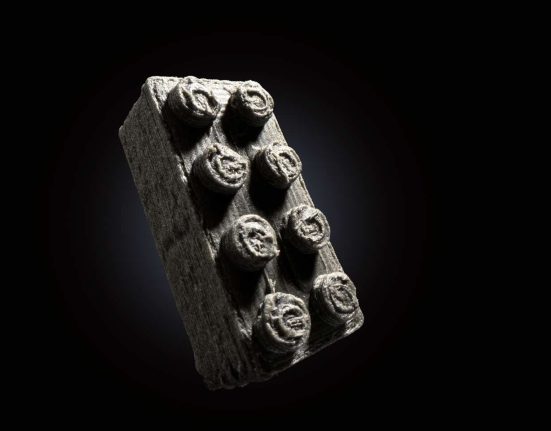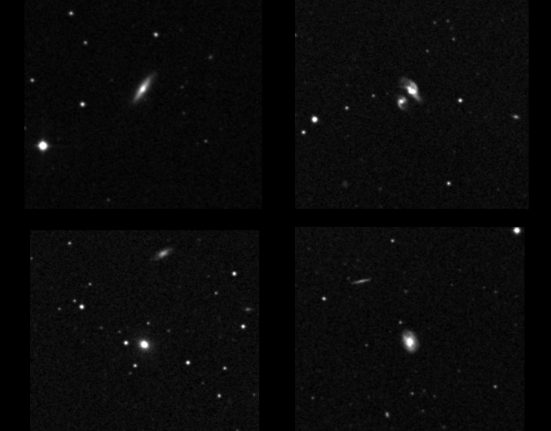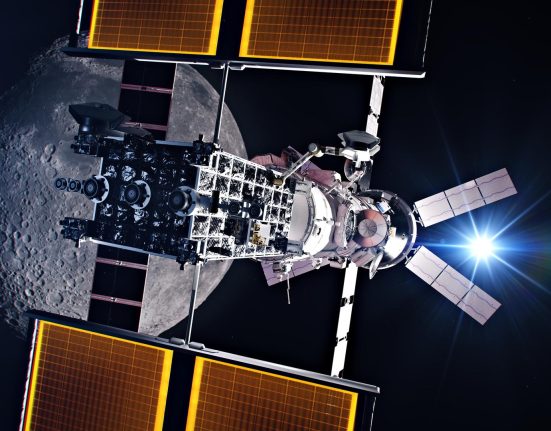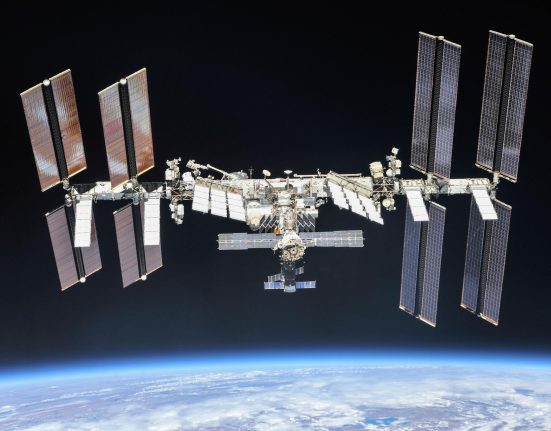
Celestron's next-generation StarSense Autoguider (SSAG) can be mounted on many brands of telescopes. A compatibility list is available on the Celestron website. Credit: Celestron
Maybe you've always wanted to try astroimaging, but were intimidated by the technical aspects, the equipment requirements, the level of experience needed… you know, the work. The hardware requirements alone can be overwhelming for the beginner. Fortunately, Celestron has now made the jump into this endeavor much easier for a beginner with its StarSense Autoguider (SSAG).
Celestron has integrated its successful StarSense technology into a small telescope and digital camera. It is a compact and powerful device that performs two essential functions for successful imaging: precise alignment and precise tracking using a guide star (known as autoguiding).
With this equipment connected to your Celestron mount or computerized telescope, you can easily align your mount to polar or star and accurately point it toward any object in the supplied database. (You can check compatibility at www.celestron.com/products/starsense-autoguider). You can then command the telescope to focus on any star you want in its field of view, which will prepare your telescope for imaging.
Alignment: Smooth sailing
The SSAG comes ready for installation. All you need are the two supplied Phillips screws to secure the mount base to your scope. The stand, which is pre-installed on the SSAG, can simply slide into the base. Plug one end of the aux cable into the back of the SSAG unit and the other into the AUX port on your stand and you're ready to go.
Once I installed the SSAG, it was time to dig into the manual to understand how to operate the SSAG features and how they work. I admit, I was a little confused; Perhaps in the future, Celestron could include a one-page quick start guide for easier setup.
Fortunately, it turns out that Celestron's manual control or PlaneWave Instruments (CPWI) telescope control software (available as a free download for Windows PC) will guide you through the process of configuring SSAG settings. And if you have previous experience with a Celestron mount, setup will be a breeze. I still recommend a good read of the manual, just to get a basic understanding of the functions.
Before booting your system, you should check the firmware version you are running and follow the instructions in the manual for future updates. The SSAG can be used in three ways: 1) with the Celestron manual control; 2) with CPWI software; or 3) if you have a SkyPortal Wi-Fi module, you can also use the SkyPortal app for operation.
When using manual control, you will need some basic information before beginning the initial alignment procedure: your location in latitude and longitude, and the current time. Manual control will store it so you don't need to enter it again unless you change locations.
Then simply follow the driver's suggestions. The polar alignment process is as follows and is optional. This step slightly improves overall aiming accuracy by a few arcminutes. The SSAG does not require precise polar alignment to operate, thanks to StarSense technology (a license plate resolution software). But if you choose polar alignment, the mount will automatically select several stars near the pole and perform the plate resolution method necessary to determine exactly where the telescope's line of sight is pointing in the sky. If a star is blocked or not visible, the routine will automatically choose another one. I really appreciate this skill, which also applies to star alignment.
Once the pole position has been determined, the manual control displays the mount's offset in altitude and azimuth and allows you to adjust each by displaying an easy-to-follow linear baseline with a center zero point and values. +/- for right and left. If you are correcting the azimuth, simply turn the azimuth knobs and watch the offset values change in real time. When the azimuth adjustment is complete, the manual control will prompt you to do the same for the altitude. It's very convenient: you don't have to stretch your neck to look through a polar telescope!
Once the polar alignment is complete, the manual control will prompt you to perform a sky alignment; I recommend choosing the automatic alignment process and letting the telescope do the work for you. When complete, the manual control will ask if you want to perform a central calibration so that SSAG can accurately place objects in your field of view.
Once your alignment is done, you can begin one of the most interesting parts of astroimaging: choosing your target. Simply type and select the name of the object and the support will focus on it. Then go to the SSAG menu on the controller screen and activate the “Auto Guidance” setting; Now you can imagine. I should note that auto guidance remains on until you turn it off manually using the controller or move to a different object, which will turn it off automatically.

Images with the SSAG
Taking images with manual control only and without a computer (not necessary for operation) is perhaps best suited to using a DSLR or mirrorless camera. However, if you are using a computer to control a CCD or CMOS astroimaging camera, you will need to use CPWI software instead of manual control. Aligning the bracket via CPWI is easier than using the controller. If it's the first setup, you'll still need your latitude, longitude, and time. CPWI will walk you through the steps for alignment and core calibration.
The CPWI program is more advantageous because it provides you with several things that the controller cannot, such as a full-screen star map showing the current position of the telescope. To change objectives, simply use the cursor on the map and click on that object. Additionally, CPWI also provides a graph showing the guidance corrections that the SSAG sends to the mount, a nice feature to monitor while imaging.
CPWI also complies with the Astronomy Common Object Model (ASCOM). This means that the program can connect the assembly with other ASCOM compatible programs. I had my Celestron Advanced Vector Extensions (AVX) mount simultaneously connected to CPWI and another CMOS program for camera control.
The reasoning behind controlling a mount from two different apps is that some imaging functions, such as dithering (automatically shifting the frame by one or two pixels between exposures so that when you stack the photos, the stars line up but the background noise doesn't) , are only done through the camera control software. Unfortunately, when the mount rotates one or two pixels for dithering, CPWI disables the SSAG auto-guidance feature, so dithering is not yet supported. (At the time of writing, the dithering functionality for CPWI is in beta testing.)

testing it
I tested the SSAG on a small platform that a novice photographer might have: a Celestron AVX mount and a Celestron C6 Schmidt-Cassegrain telescope. When installing the system in my backyard, which contains enough trees to give a good test of the star and polar alignment procedures, I used the manual control for polar alignment. Several stars he chose were blocked by my house, but he continued selecting alternatives until he had enough.
Then I did the automatic sky alignment. Again, several stars were blocked, but the system selected alternative stars and successfully completed its task. The controller then suggested a center calibration (which aligns the SSAG's field of view with that of its scope), which I did. After just 10 minutes, I was ready to take the image.
I chose the Pacman Nebula (NGC 281) as it was high in the sky and unobstructed. The mount swung around and focused on the object. I went to the SSAG menu, turned on auto-guidance, and took a series of 10-minute exposures with a hydrogen alpha (Hα) filter on my CMOS camera. The C6 has a focal length of 1,500mm; It's probably a lot longer than it should take a novice photographer, but it was a good test for the SSAG.
I was very pleased with its performance during a two-hour session in which I captured 12 exposures. The slight differential bending during each 10-minute exposure resulted in a shift of several pixels between images, giving me the blurring I needed without unduly affecting the geometry of the star.
I am confident that the Celestron StarSense Autoguider is an excellent next-generation tool to facilitate an otherwise complex task and encourage newcomers to astrophotography. Even if you are a more experienced photographer, I recommend the SSAG for its simplicity when it comes to field setups. Automatic guidance is now as simple as pressing a button or tapping a screen.













Leave feedback about this